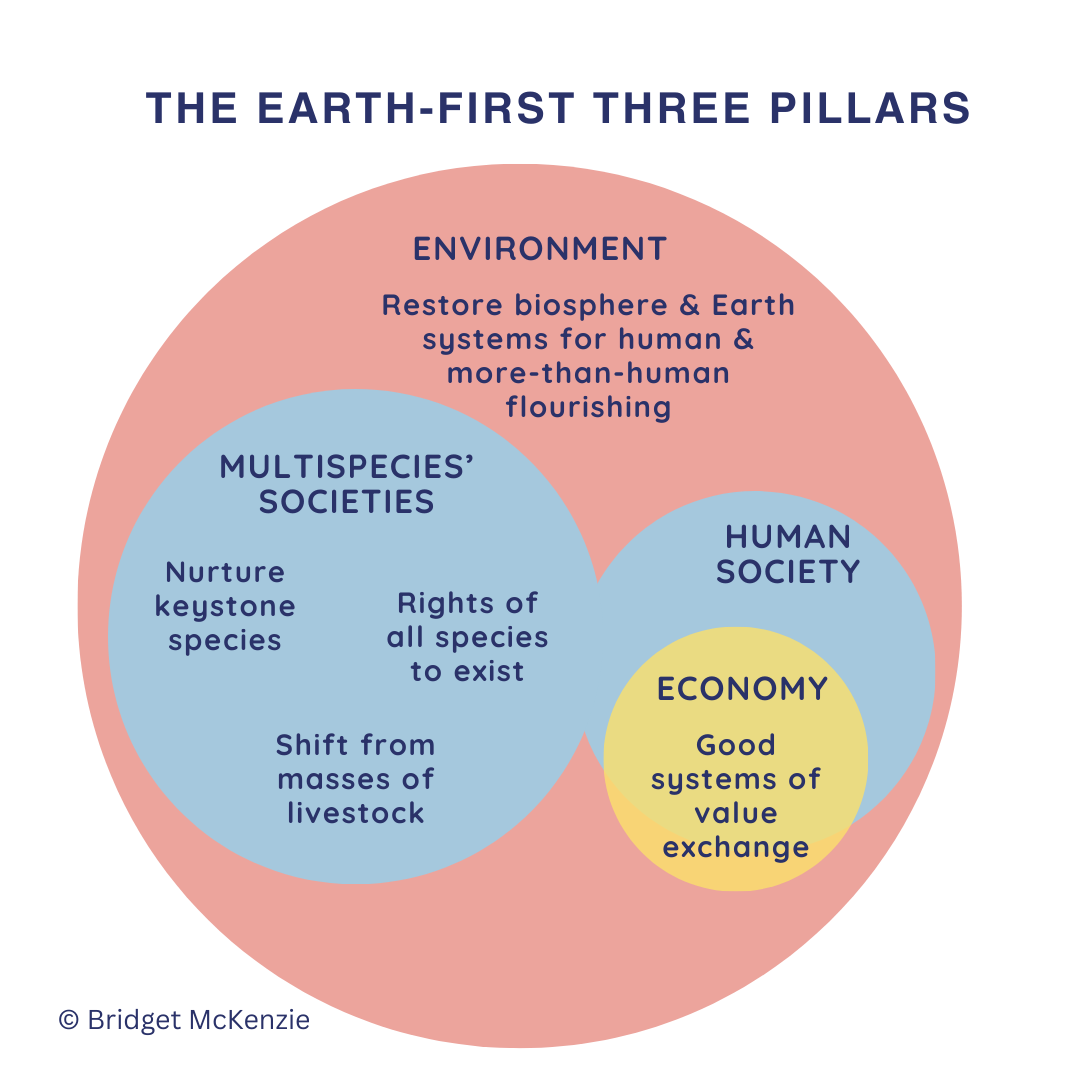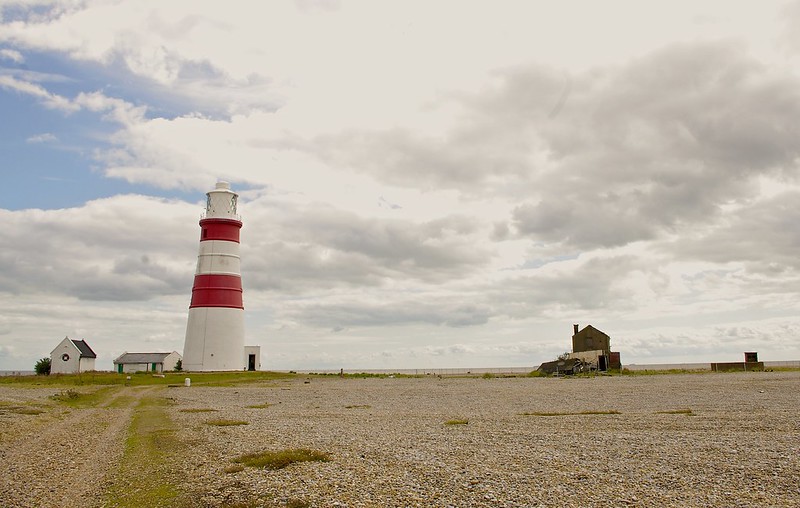How do we promote human prosperity within a flourishing web of life, when that web of life is fragmenting rapidly?
This lays out my thoughts and questions about sustainable economics, such as Doughnut Economics, now that the planetary boundaries are so breached. I shared this presentation at the first open meeting of a new Doughnut Action group for Norwich. Disclaimer: I’m not an economist, and my interest and skills lie much more in creative communication of such frameworks, and the cultures of sustainability. This will have many holes in it!
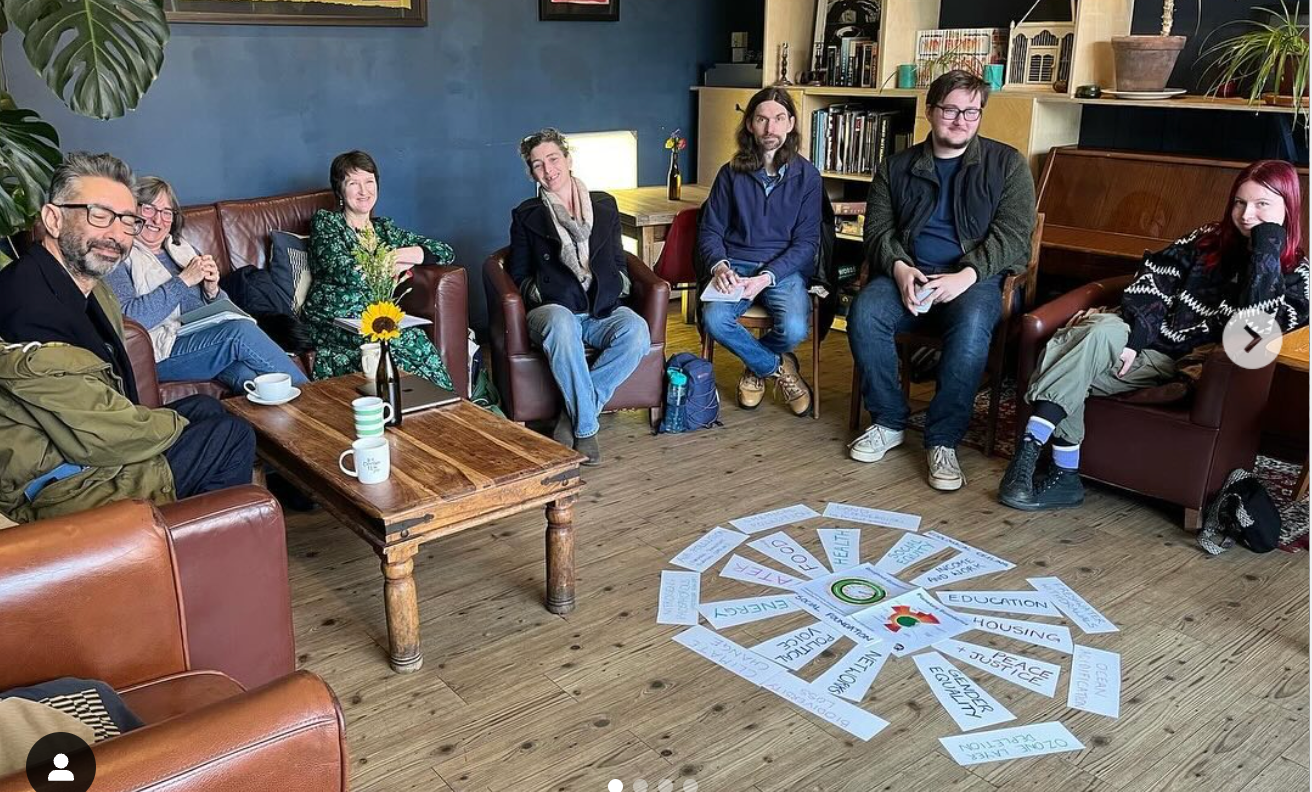
Doughnut Economics is about moving to a system that strives to meet the basic needs of all people within the limits of the planet. Economist Kate Raworth developed this idea, illustrating it with a model like a doughnut:
- The inner ring is the social foundation, the minimum that everyone requires e.g. access to food, water, health or education.
- The outer ring is the ecological limits of the planet, which when breached result in climate change, biodiversity loss and various forms of pollution.
Current systems that provide nutritious food, energy, clothing, decent housing, transport and so on are known to be harmful, increasing ill-health and inequalities, destroying ecosystems, and disrupting the climate. Doughnut Economics is an approach to building communities where solutions to environmental problems don’t harm society, and solutions to social problems are not detrimental to the environment.
Raworth is not the first person to address the question of human flourishing within environmental limits as it had been explored in the 1972 Limits to Growth book and by Herman Daly in Toward a Steady-State Economy (1973) incorporating many other writers such as Donella Meadows and E.F. Schumacher. There are other alternative economics frameworks alongside the Doughnut, such as Eisenstein’s Sacred Economics and the Degrowth movement summed by the writing of Jason Hickel.
I’m aware of several critiques of the Doughnut: it’s not political enough; the planetary boundaries are technical and quite hard to capture locally relevant data about all the elements; that Doughnut Action groups are slow to act; it’s too optimistic. And there’s my own long-standing challenge that it lacks the word ‘culture’ in the social foundation, although Raworth does discuss how representations of a growth-based norm create our degenerative culture.
Some criticise Raworth for not having a total solution that can be easily applied to action while seeming to present the Doughnut as such. However, I do think she acknowledges the conundrum and the enormous difficulty we all face together e.g. she writes “No country has ever ended human deprivation without a growing economy. And no country has ever ended ecological degradation with one.”
The question popularised by the Doughnut is a compelling one, and I find it energises people. It’s not much different from the challenge posed by Buckminster Fuller in his 1961 World Game: “to make the world work for 100% of humanity in the shortest possible time through spontaneous co-operation without ecological offence or the disadvantage of anyone.”
Most importantly, the challenge brings people together from social and environmental sectors — which is a divide that is being increasingly forced by anti-environmental propaganda. Our budding group in Norwich has a lot of interest.
Here are the key points of a quick presentation I gave:
We have to start with the bigger picture…
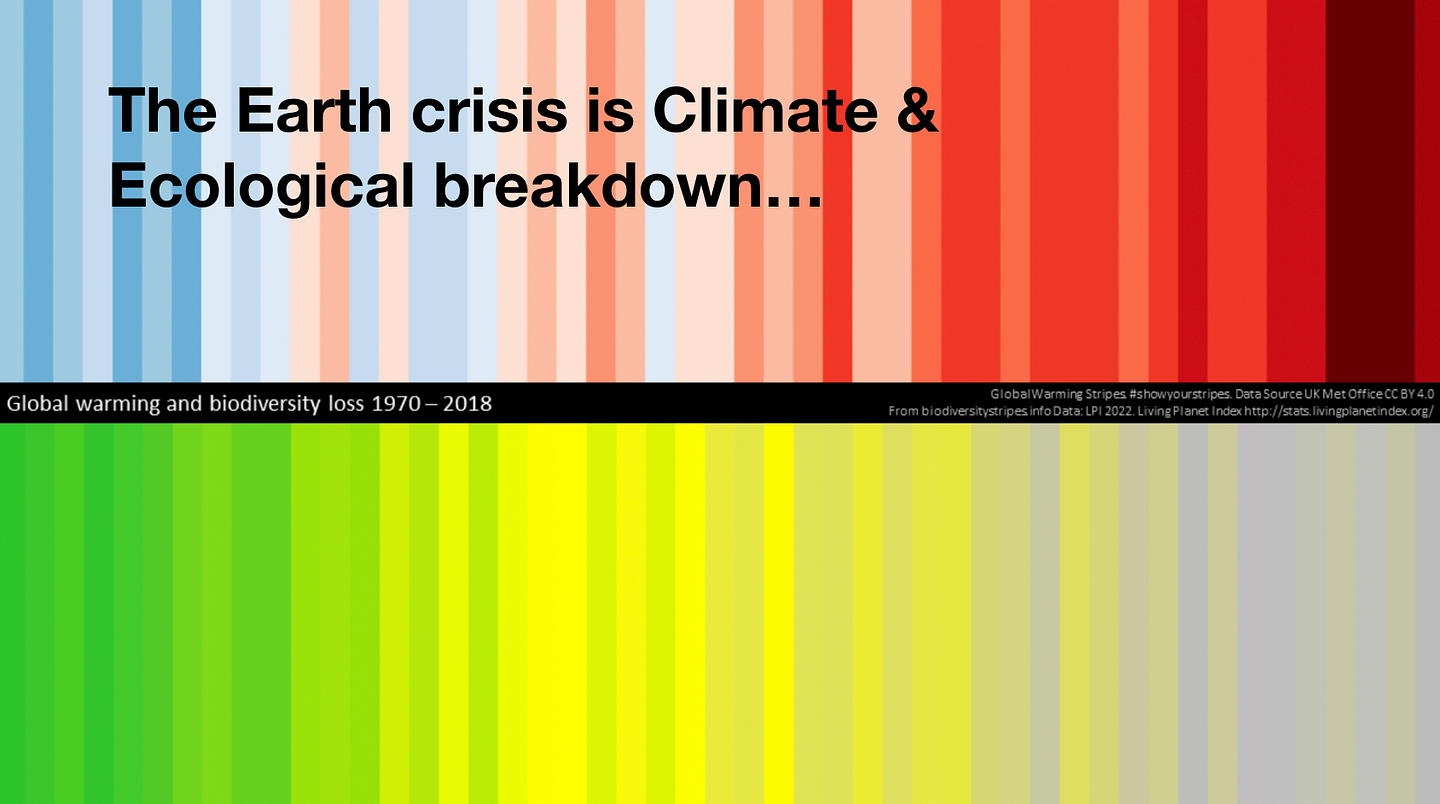
…and inside of this crisis is suffering for people and disruption of economies…
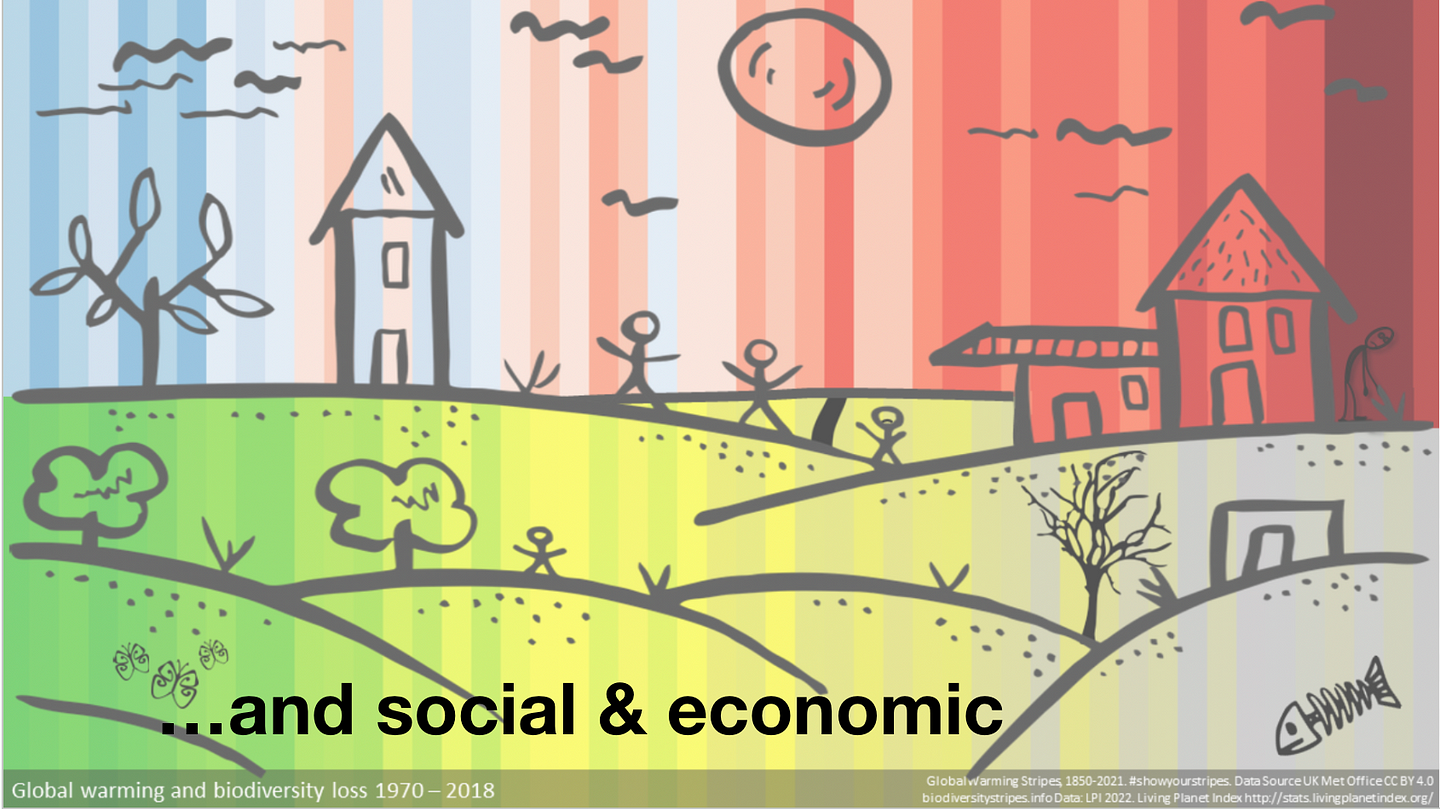
And of course, extractive industries, consumerism and free-market economics have caused this wider crisis. Our cultural response to this crisis is to look away — particularly from the suffering of humans and animals (impacts on lives) — and to minimise the problem and limit our perspective. We seek the comfort of what we know, and the reassurance of social norms. We put on blinkers or see with tunnel vision. And when looking at the environmental crisis, most people think about techno-fixes or simple domestic actions.
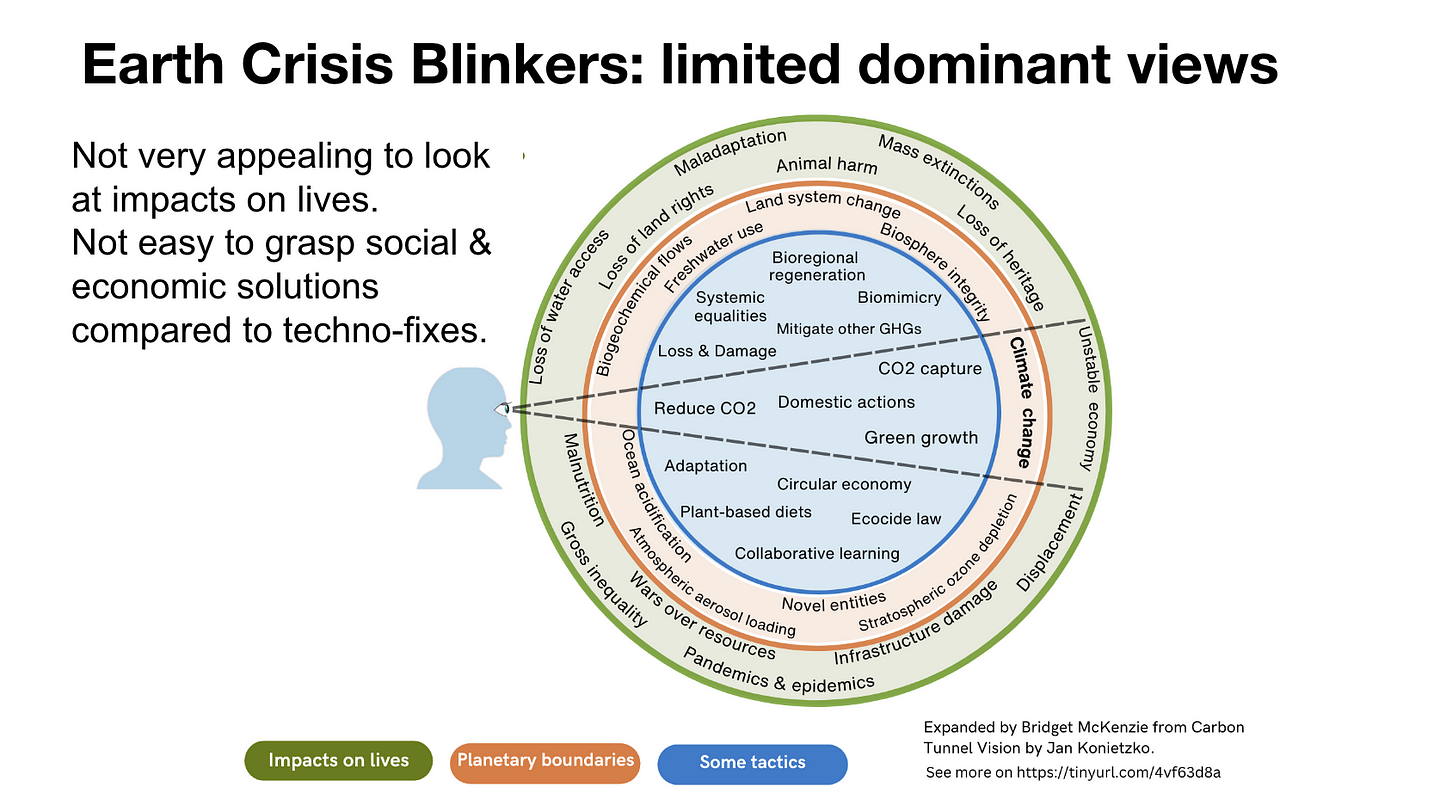
This cultural response is in part rooted in the histories of colonialism, making invisible power over others so that wealth & luxury can be created and hoarded without conscience. A majority of people are lured or forced into labour for others above them (rather than for self or community), increasingly with the promise of freedom to aspire to ever greater heights of material wealth.
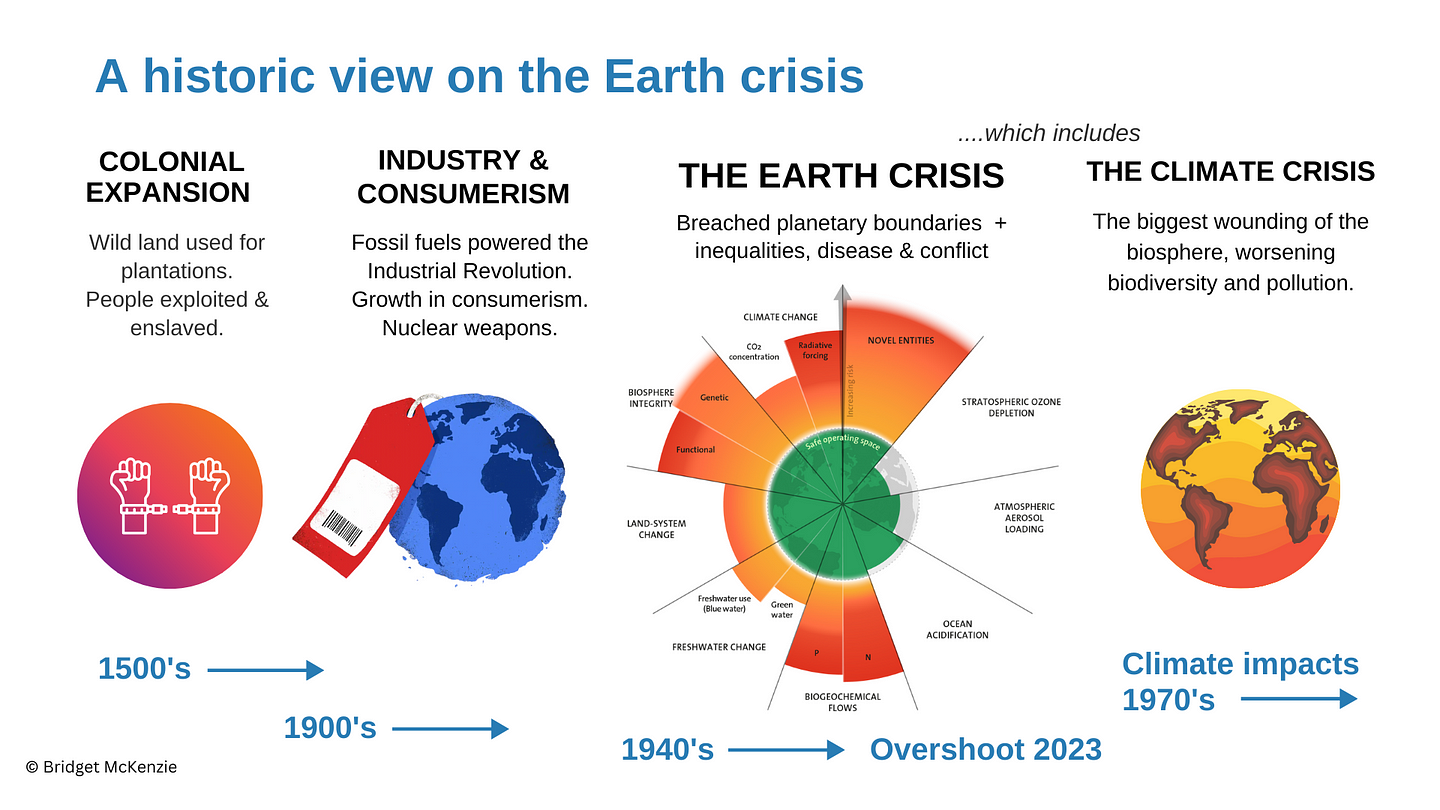
The Doughnut offers a way to see clearly the needs of human development within the planetary boundaries of the Stockholm Resilience Centre (which takes it further than the idea of ‘sustainable development’).

The social & economic parts of the Sustainable Development Goals inform the social foundation. See the top two tiers of this diagram, which rightly shows the biosphere goals as fundamental.
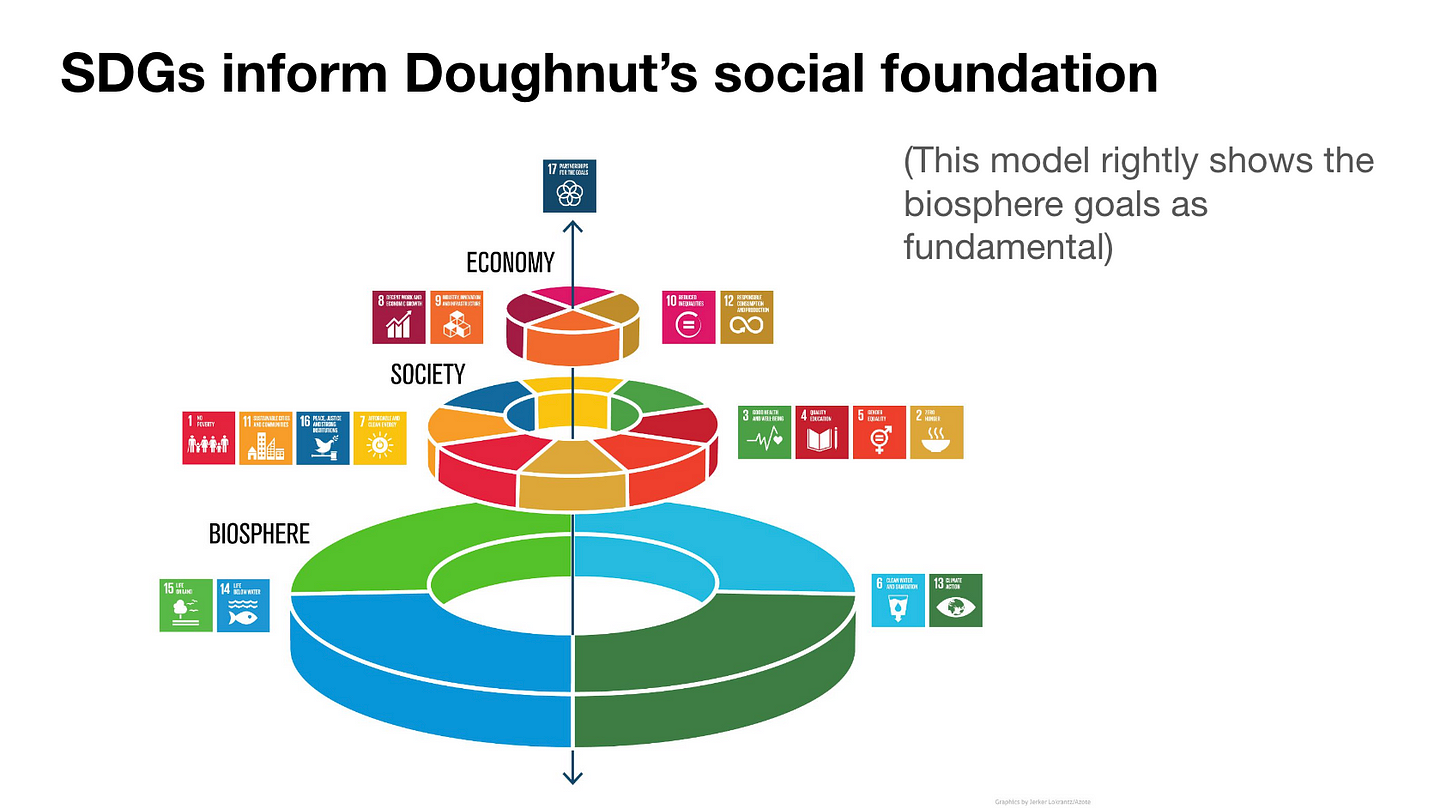
However, my challenge is that the Doughnut diagram does not show the breached state of the planetary boundaries, when the limits are overshot by nearly half of Earth’s capacity. The biggest wounding of the biosphere is climate disruption. Global temperatures have risen and the climate system has become less stable, causing extreme weather, rising sea levels and changing seasons. As well as reducing biodiversity, climate disruption impacts on people everywhere, reducing food supplies, displacing people from homes and lands, and causing death from extreme heat, floods and storms. Entangled with this, ‘pollutocrats’ and authoritarian regimes are waging territorial and ideological wars creating vast suffering and displacement. These factors make efforts to create human wellbeing and thrivable economies so much harder. We’re beyond the task of maintaining a safe operating system, because it’s no longer safe and tipping points of ecological collapse are incoming. The task is increasingly less about maintenance than about radical restoration of ecosystems and radical schemes of rescue and protection for humanity.
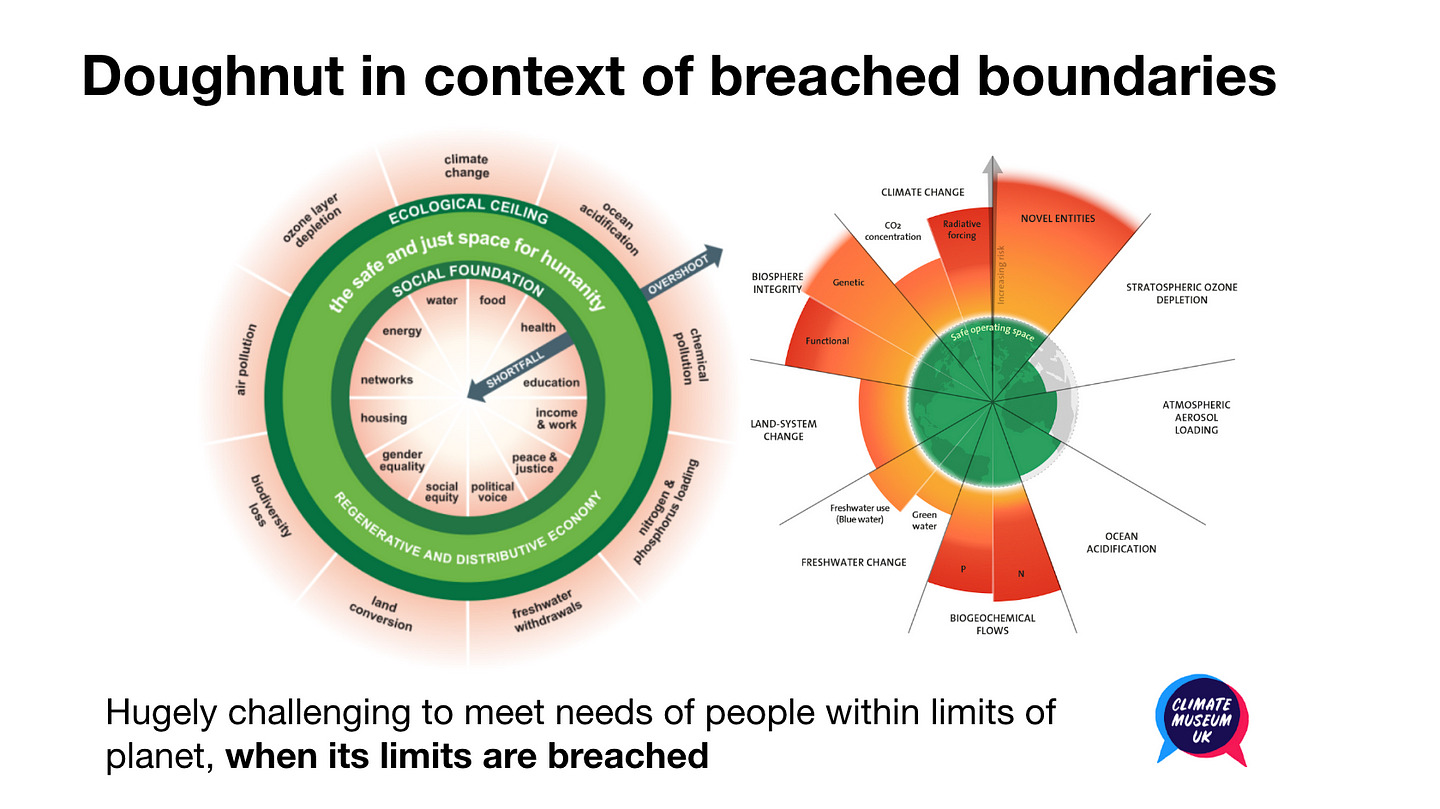
It’s all very well, and necessary, to design systems that operate within the limits of the planet. But, that would have been easier, and necessary, forty years ago. Now, the design challenge is not just harder, but extremely different.
However, this should not stop us from trying. The Doughnut Action group co-ordinated by the Civic Action Lab & Impact Hub Birmingham is inspiring, while also being instructive for the challenges they face.
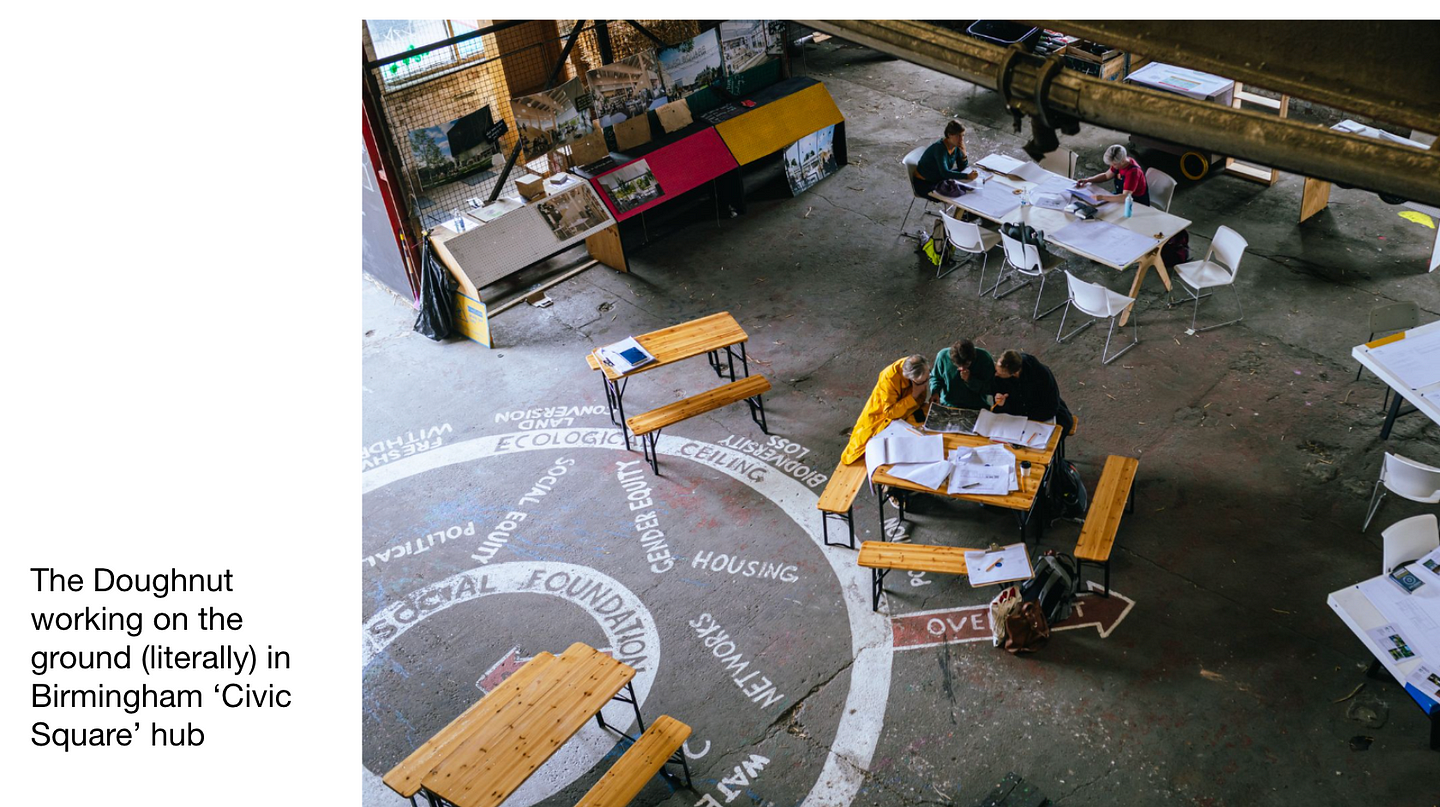
They created a neighbourhood portrait of Ladywell. This process involves gathering data for each of the 21 categories on the Doughnut, and visualising it. This clearly shows how the space for social data is overwhelmed by the extent of the breaching of planetary boundaries.
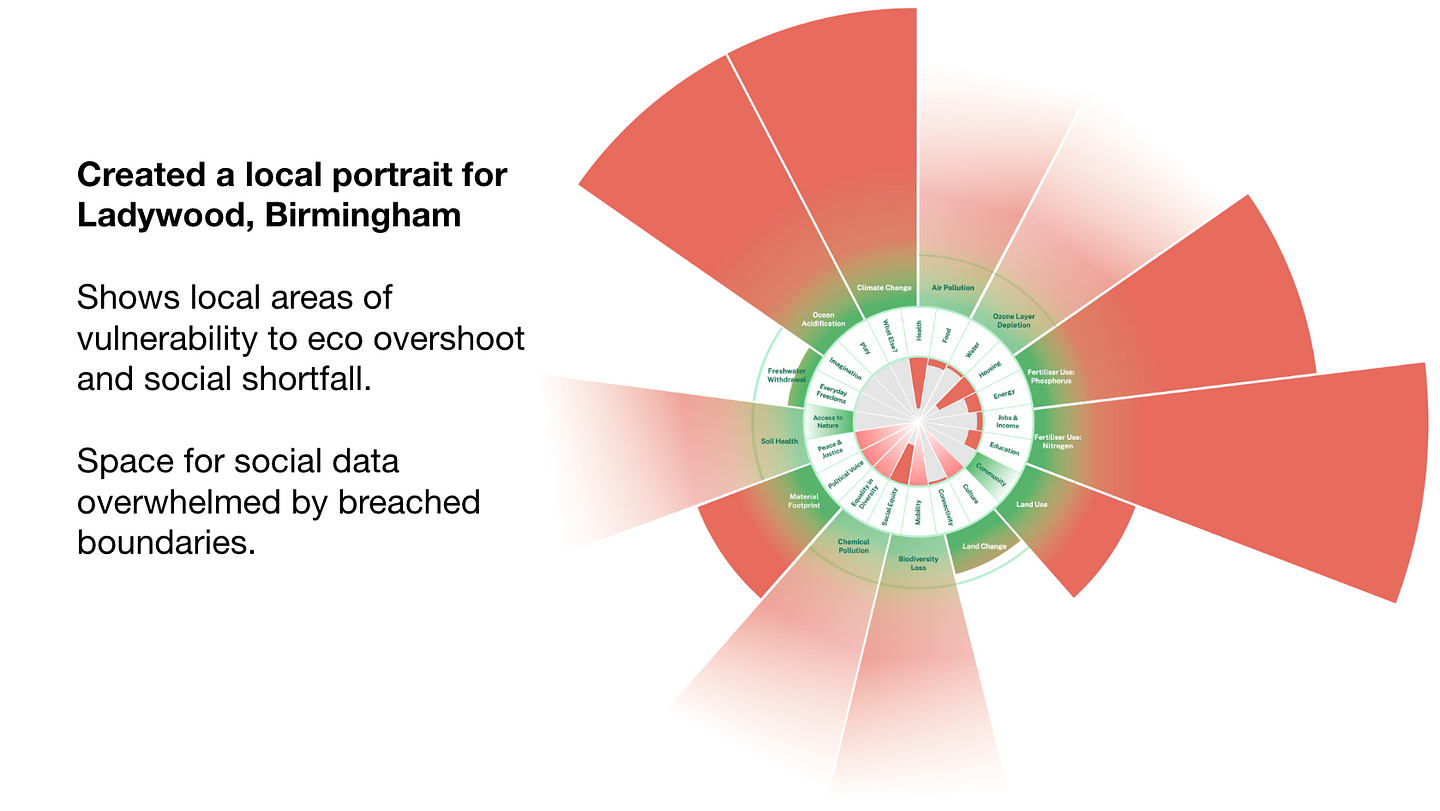
The process itself of exploring and gathering this data would be helpful. However, I wonder if it’s worthwhile to doggedly pursue all of the 21 categories. And also, I haven’t mentioned so far the most important framework in Raworth’s book, which is subtitled ‘Seven ways to think like a 21st Century economist’. My suggestion was that mapping exercises of local activities could focus much more on these principles.

There are a couple of aspects of these principles that I question. For example, I’m unsure about being ‘agnostic about growth’. In the light of breached planetary boundaries, we need to turn that curve of growth downwards in the way that most growth is understood and practised.
Also, there is no principle that is explicitly about being biophilic and de-centring the human perspective towards a more multispecies and pluricentric lens. Without this being explicit, it’s too tempting for too many people to fall into the extractive cultural mindset that separates environmental sustainability from economic and social sustainability.
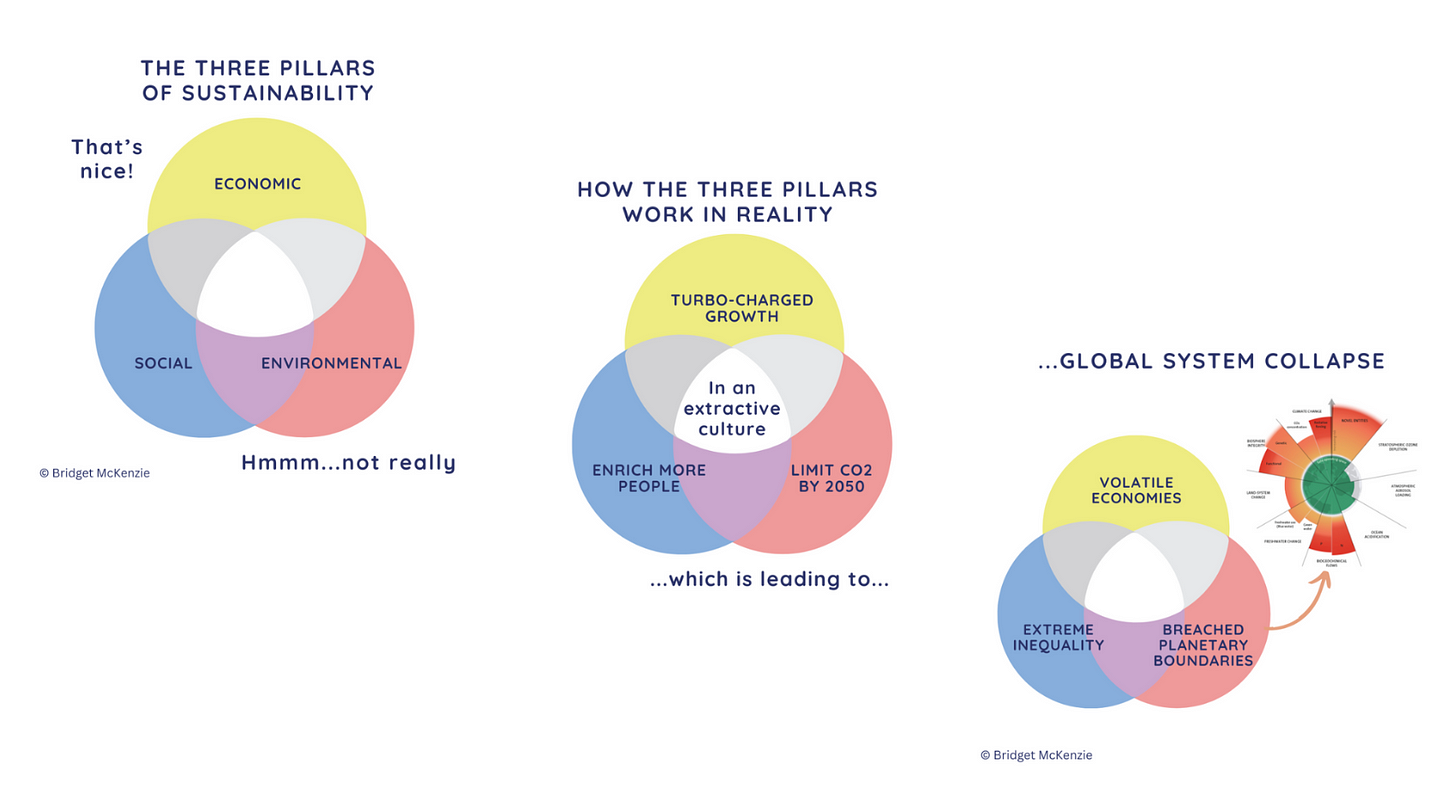
Instead, the three pillars of sustainability should be reframed as nested Earth-first pillars, that make visible the societies of all other species of life. We tend to define biodiversity objectively as a measurable thing, as ‘the environment over there’. We should see biodiversity is a multitude of civilisations (of intelligent non-human persons) and entangled communities.
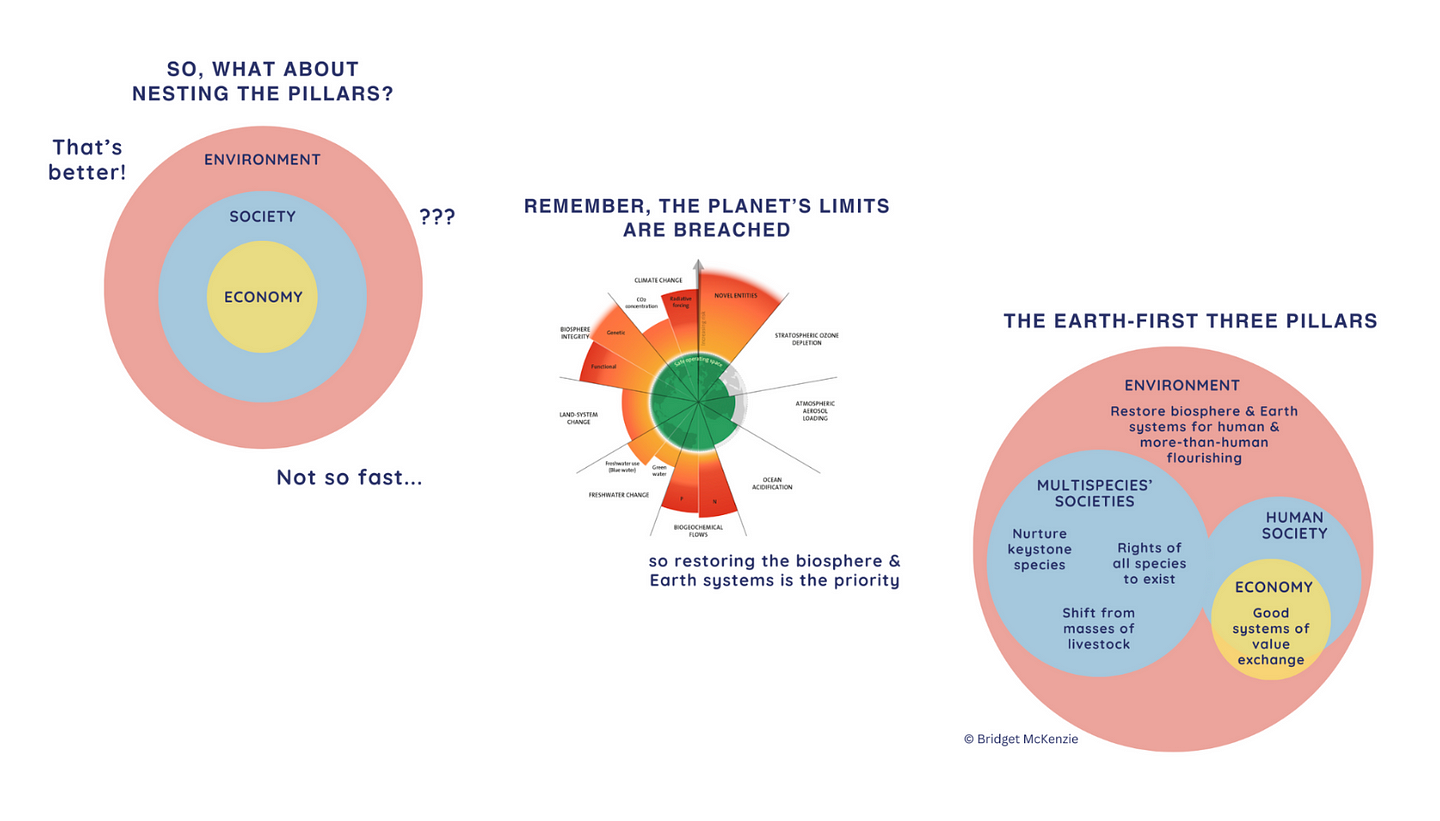
I proposed the following exercise e.g. if we were to hold an activity to map local initiatives on the Doughnut. The ways this differs from the standard Doughnut:
- the planetary boundaries are reduced to three key issues: Biodiversity Loss, Pollution (of several kinds) and Climate Change
- the social foundation factors are clustered and renamed into five areas: Food & water; Energy, transport & shelter; Education, skills & work; Equalities & Rights; Culture & governance.
- Some solutions are suggested. (In a facilitated situation, there would be a wider range available, and an invitation to find local stories.)

Finally, I suggested that we create a special theme in Norwich of exploring creative and inclusive methods for engaging people, and pooling approaches to nature-positive and pro-social change, such as my own People Take Action framework.
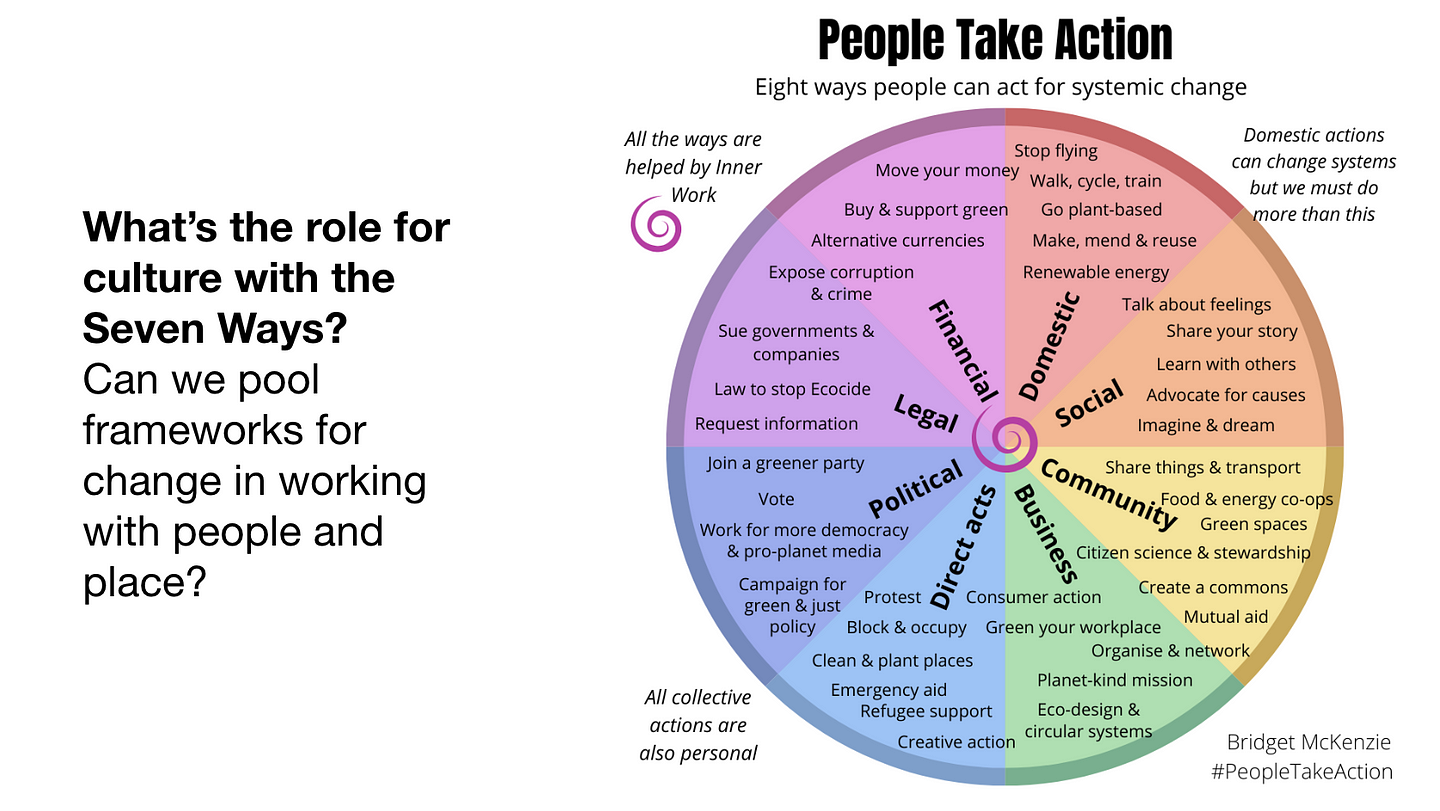
Finally, I’m adding an image to answer a question asked by one of the members. How do we explain how inequality is also bad for the environment?

You can find the new Norwich Doughnut group on Facebook and Instagram, and we’re communicating via a WhatsApp group.
You can find out more about the activities I’m doing in Norwich, under the umbrella of Climate Museum UK — on Possitopia Norwich.
